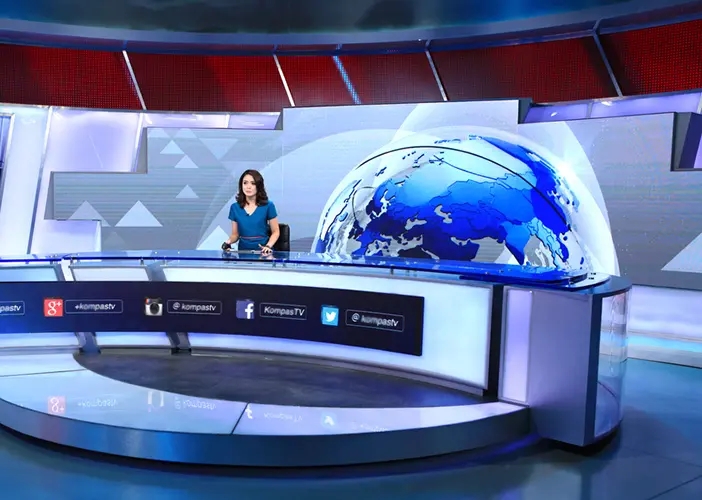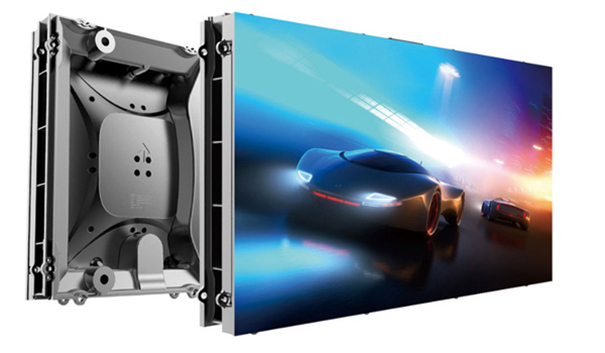Development Trend of Small Pitch Display
Key word 1: COB.
Key word 2: micro LED.
Key word 3: Double backup.
Key word 4: Visualization.
Key word 5: New breakthroughs in technology.
Key word 6: Expansion of application fields.
Key word 7: the miniaturization of lamp beads.
Small-pitch LED display refers to indoor LED display with LED pixel pitch of P2.5 or less, mainly including LED display products such as P2.5, P2.083, P1.923, P1.8, P1.667, P1.5, etc. With the improvement of LED display manufacturing technology, the resolution ratio of traditional LED display has been greatly improved. As the leader of the LED small-pitch display industry, AVOE LED wants to talk about the three directions of the small-pitch industry trend briefly.
First, the market share of commercial display for small-pitch LED is growing. Under the background of interconnection of everything and smart city, the function of LED display screen is no longer limited to “one-way transmission”, but turns to the stage of “intelligent interaction”.
Small-pitch LED display will become the interaction center between people and data and bring scene and immersion experience to users. With the continuous innovation of products, the continuous reduction of costs and the continuous promotion of interaction, small-pitch LED is rapidly developing in commercial display applications such as conference rooms, education places, shopping malls and cinemas.
Second, the pixel pitch of small-pitch LED displays decreases from time to time and Mini LED displays enter the mass production period. With the gradual increase of consumers’ requests for visual effects and the further decrease of costs, products with P1.2 ~ P1.6 and smaller spacing below P1.1 will be the fastest-growing products in the next few years. It is estimated that the annual compound growth rate will be 32% and 62% respectively from 2018 to 2022.
As the maturity of Mini LED technology increases and the cost gradually decreases, Mini LED will gradually complete its application for commercial use and even civil use in the future.
Third, market competition is gradually changing to comprehensive strength competition such as technology, quality, brand and service. After years of development, the domestic LED display industry has entered a new stage of development.
From the initial extensive competition to the competition of comprehensive strength represented by capital and technology, the decisive factors of enterprise comprehensive strength and brand competition are gradually strengthened. In the future, with the development of the industry, enterprises with large brand influence and strong comprehensive service ability will enjoy higher brand premium, gaining more customer recognition and further concentrating their market share to advantageous enterprises.
So as a summary, what are the 7 key words in the LED display industry in 2021?
Key word 1: COB.
This year, in the field of small-pitch LED display, the focus of technological breakthroughs is longer on the reduction of pixel spacing. Especially when SMD packaging is facing certain bottlenecks, the innovative ideas of the industry are gradually focused on the upstream, which has also pushed COB–a packaging method to start its development in the field of small-pitch. When the mainstream SMD surface mount in the industry is considered to be difficult to break through the process and cost constraints of products with pixel density below 0.7 mm. COB, a direct LED wafer-level packaging method, is considered to have more obvious advantages in the field of higher pixel density.
Firstly, the LED crystal element is directly welded to the circuit board and a layer of optical silica gel protective shell is added, which is more beneficial to moisture prevention, collision prevention, heat dissipation and stability of the crystal element. In addition, since there is no reflow soldering process that SMD needs to adopt, the panel stability is further improved, and the dead lamp rate of COB can be as low as one tenth of SMD.
Key word 2: micro LED.
Another hot spot in the field of LED display is micro LED. In fact, when it comes to essence, micro-LED is similar to the mini-LED mentioned above. Both of which are based on tiny LED crystal particles as pixel luminous points.
The biggest difference is that the former uses 1-10-micron LED crystals to realize a display screen with 0.05 mm or less pixel particles. The latter uses tens of microns of LED crystals to realize a display screen with 0.5-1.2 mm pixel particles. The “relatives” of them are also the well-known small-pitch LED, which uses sub-millimeter LED crystals to realize 1.0-2.0 mm pixel particle display screen.
Therefore, in short, the biggest difference between the three technologies of the same type lies in the size of the crystal unit. However, it is precisely the manufacturing process, cost and other related factors brought about by this factor that determine which technical route can be truly commercialized. Compared with the popularization of small-pitch LED screens and the coming of mini-LED, micro-LED seems to have a long way to go. The biggest technical obstacle lies in the “huge transfer” link. Actually, the industry does not have a mature solution to this problem at present.
Key word 3: Double backup.
In recent years, the increasing profit of small-pitch LED display market has pushed up the popularity of the industry and the further popularization of applications. What is worth paying attention to is that small-pitch LED displays frequently appear in various major conferences and competitions, such as G20 summits. All in all, small-pitch LED displays are everywhere. As a high-precision equipment, users’ requirements for small-pitch LED displays are accompanied by the considerations of stability expect the excellent display effect. Because once there is a black screen and other faults in the main venue, it will cause serious mistakes.
Therefore, when the small-pitch LED is used as the main screen of the venue, its stability assessment is the most important thing. The “no black screen” becomes the biggest factor. Because of this, no black screen has become the core appealing point of screen enterprises’ research and development, which has also brought about a “double backup” design craze.
Key word 4: Visualization.
Visualization has been called for many years in the field of large-screen display business. With the deepening of industry understanding, the concept has also been deepened and upgraded in connotation. Different from the previous simple requirements of “surface layer” visualization of “signal on wall”, at this stage, visualization applications are beginning to upgrade. On the basis of “being able to see”, it is necessary to realize the deep integration of large screen and user-owned business systems and the efficient business linkage across departments and regions. In that way, the screen systems can give full play to their maximum decision-making value in every link of user business and be “easy to use”.
Key word 5: New breakthroughs in technology.
For small-pitch LED displays, although pixel spacing is not the only one to measure the quality, image quality, reliability and other indicators of display screens. And with the increasing attention of enterprises to the application level, pixel spacing is also no longer the only factor to measure the enterprise competition. However, from a technological perspective, especially for those large listed enterprises, pixel spacing is still the focus of building differentiated competition barriers among enterprises.
Key word 6: Expansion of application fields.
For 2017, one of the most noteworthy trends in the small-pitch LED display industry is the increasing diversification of application fields. It means that its application not only focuses on the traditional fields with monitoring and exhibition as its core business but also takes substantial steps to fields that were less involved or even never involved in the past. In March this year, Samsung launched the world’s first LED movie screen at the CinemaCon Film Fair in Las Vegas, which shocked the movie industry by presenting the latest movie blockbuster with unforgettable 4K resolution (4096*2160 pixels) through its high dynamic range (HDR) technology. With P2.5 small-pitch display screen, even if you look at it face to face at close range, you can still get HD picture quality and bright display effect.
The bottom of the LED movie screen is also equipped with a universal wheel so that it can move flexibly and lightly without causing heavy and inconvenient pressure to people. All kinds of “cross-border” such as these have made small-pitch LED screens out of the confinement of people’s minds that they are only used for large-screen monitoring and other fields and begin to develop in many fields. This is undoubtedly positive for accelerating the popularization of small-pitch LED, broadening the market and easing internal homogeneous competition.
Key word 7: the miniaturization of lamp beads.
Looking at the development of small-pitch LED and even the whole LED display industry, it is not difficult to find that the smaller pixel spacing is the main line. If we explore the essence behind it, we will find that the core of the change is actually based on the continuous improvement of luminous efficiency.
The reason is that under the same brightness requirement, the higher the luminous efficiency, the smaller the crystal area required by the LED lamp bead. In other words, the improvement of lighting efficiency enables smaller lamp beads to meet the demand of the same brightness in the past, which immediately brings about a process of continuous miniaturization of lamp beads.
Post time: Feb-19-2022


